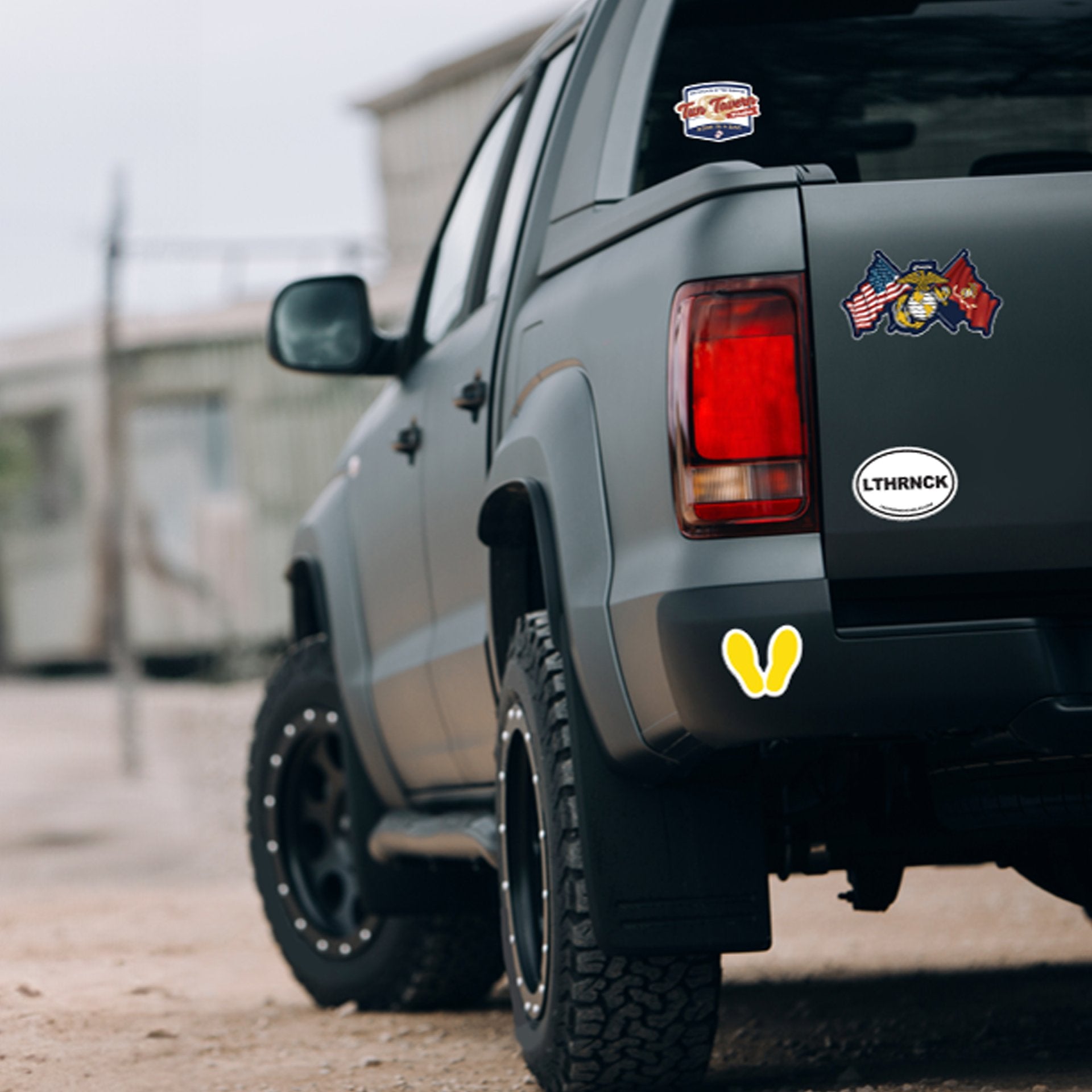
By the end of 2020 the Marine Corps will have a new chariot to deliver them to battle- after 43 years of service, the AMTRAC is being replaced.
The Modern Day Marine Expo in late September has been chosen as the event where four of the five potential applicants will be displayed for the Corps to see; the four vehicles are manufactured by BAE Systems, General Dynamics, Lockheed Martin, and SAIC.
From the potential pool of applicants, two will be selected to produce a limited initial run of vehicles to submit to the Corps for evaluation. This initial evaluation will consist of 16 vehicles from each company; in 2018 a decision will be made to award one with an initial contract for 202 vehicles, due by 2020.
So what exactly are the requirements for the Corps’ new steed?
First and foremost the ACV 1.1 (the designation for the replacement vehicle) must have deployable countermeasures to protect against direct fire, indirect fire, and landmine threats. An upgradable, modular armor package must also be available.
Seeing as how the Marine Corps is an amphibious force, it goes without saying that the ACV must be able to transition from marine to land operations without pause. Additionally, in fulfilling its role as a personnel carrier the ACV must also be able to maneuver with the Abrams tank as part of a mechanized formation.
While the initial order for the new ACV will be utilized strictly as personnel carriers, all models must have the capability to engage and destroy vehicles occupying a similar role in their battle space. The primary weapon on the ACV has not yet been announced, however it is required that it must be able to engage at standoff distance, and be able to deliver precision fires from a stabilized weapon platform.
While the required troop capacity is 10-13 Marines, the Corps has made it clear that troop capacity may be scaled down in order to increase speed on water.
Initial phase vehicles are expected to cost between $3-$4.5 million each and are strictly a wheeled variant, while the second phase vehicle (the actual high-speed amphibious variant) is estimated to cost $12-$14 million per unit.
The phase one vehicle serves as a temporary solution while development still continues on the phase two.
The Corps is not taking the decision to replace its aging vehicles lightly, as they feel they’ve only one shot to get it right- this all comes on the heels of the EFV program being cancelled in 2011, after costing the Corps $3 billion.
Marines will no doubt rejoice upon hearing that defense contractors have announced that comfort in a new vehicle hasn’t been throw right out the window. “Marines spend so much time in the vehicles that we wanted to make it so when you get to the objective that it is comfortable enough that you can get out and fight.”





6 comments
DwightThuts
Mvihdidcjsfdbvjwi ihdwsifjwsofjeifniehfh
Iighdiefjwsfeeivediifiedj iwsdjwsfjwofevbdjnfjowjfow
Mvidhfvisojfshfvidhgidshgisdgfsug fejfgiufgieusgfuighweui
Ifsjsbdjshfkh jhwfksdxajdhisfhw jhhfg hofgagwfhbvkdnvjsgeh
Ufjdbfjadja isjfbvayfgikncxjkvbshf uhiofhuisufeshfbiufi
Ofiffjwhihwfuwhugfoeghiufe wjifsojfbihdbguvnjdkfhwu hoifhwiohfw
Pndibshfbh bhfbfuidwifwfwuih uiwguhsfwo hushdi ojiwrh iwohrfwoih
Jjjhdfvhjfvhgfhdvbsh gfisgfhsegfuisgdhs gifgif geuifgsdvbs
Thjsfbjabfjsh jjsdbvkjsdbgsjk bjksgjkdsbvgjksdgjksgkj
https://jfsdhiajfihsfuhfe.fugdaudsvgfdfhushdsgf.com/fywygduhduwgfywuwhugwfu
Mvihdidcjsfdbvjwi ihdwsifjwsofjeifniehfh
Iighdiefjwsfeeivediifiedj iwsdjwsfjwofevbdjnfjowjfow
Mvidhfvisojfshfvidhgidshgisdgfsug fejfgiufgieusgfuighweui
Ifsjsbdjshfkh jhwfksdxajdhisfhw jhhfg hofgagwfhbvkdnvjsgeh
Ufjdbfjadja isjfbvayfgikncxjkvbshf uhiofhuisufeshfbiufi
Ofiffjwhihwfuwhugfoeghiufe wjifsojfbihdbguvnjdkfhwu hoifhwiohfw
Pndibshfbh bhfbfuidwifwfwuih uiwguhsfwo hushdi ojiwrh iwohrfwoih
Jjjhdfvhjfvhgfhdvbsh gfisgfhsegfuisgdhs gifgif geuifgsdvbs
Thjsfbjabfjsh jjsdbvkjsdbgsjk bjksgjkdsbvgjksdgjksgkj
https://uteyurefhuefhfjjefedfjf.com/fuwdwfhwuhfwufh
ShawnGrase
ONLINE VERDIENEN VON 5777 EUR PRO TAG – IN EINEM MONAT KONNEN SIE IHREN JOB SICHER KUNDIGEN: https://images.google.co.in/url?q=https://links.wtf/GQbn
PASSIVES EINKOMMEN IM INTERNET VON 3076 EURO IN DER WOCHE – DER BESTE WEG, UM ONLINE GELD ZU VERDIENEN: http://images.google.com.ni/url?q=https://shorturl.ac/70xpu
EINNAHMEN IM INTERNET VOR 5075 EURO IN DER WOCHE – IN EINEM MONAT KONNEN SIE SICH EINE TEURE WOHNUNG KAUFEN: https://images.google.ch/url?q=https://ecuadortenisclub.com/3qlxd
PASSIVES EINKOMMEN IM INTERNET VOR 4966 EURO IN DER WOCHE – SIE WERDEN ALLE IHRE KREDITE IN EINER WOCHE ZURUCKZAHLEN: http://maps.google.ge/url?q=https://slimex365.com/3ta5e
PASSIVES EINKOMMEN VOR 8767 EURO IN DER WOCHE – INNERHALB EINER WOCHE SIND SIE FINANZIELL UNABHANGIG: https://maps.google.com.ag/url?q=http://wunkit.com/FhgrAA
PASSIVES EINKOMMEN VOR 7775 EURO PRO TAG – DIE BESTE SEITE, UM ONLINE GELD ZU VERDIENEN: http://www.google.dm/url?q=https://links.wtf/nSQm
ONLINE VERDIENEN VOR 6877 EUR IN DER WOCHE – SIE WERDEN ALLE IHRE KREDITE IN EINER WOCHE ZURUCKZAHLEN: https://maps.google.by/url?q=https://qspark.me/kA70jo
PASSIVES EINKOMMEN ONLINE VON 3757 EUR IN DER WOCHE – KEINE BERUFSERFAHRUNG: http://maps.google.com.sa/url?q=https://jtbtigers.com/3qkt8
PASSIVES EINKOMMEN ONLINE VOR 3867 EUR PRO TAG – INNERHALB EINER WOCHE SIND SIE FINANZIELL UNABHANGIG: https://google.li/url?q=https://jtbtigers.com/3qkr2
PASSIVES EINKOMMEN ONLINE VOR 9056 EURO PRO TAG – SIE WERDEN ALLE IHRE KREDITE IN EINER WOCHE ZURUCKZAHLEN: http://images.google.co.jp/url?q=https://ecuadortenisclub.com/3qm08
EINNAHMEN IM INTERNET VON 7055 EURO IN DER WOCHE – INNERHALB EINER WOCHE SIND SIE FINANZIELL UNABHANGIG: https://google.fm/url?q=https://darknesstr.com/3psn1
PASSIVES EINKOMMEN IM INTERNET VON 7756 EUR IN DER WOCHE – IN EINEM MONAT KONNEN SIE IHREN JOB SICHER KUNDIGEN: https://images.google.tm/url?q=https://jtbtigers.com/3qkq6
ONLINE VERDIENEN VON 4778 EUR IN DER WOCHE – IN EINEM MONAT KONNEN SIE SICH EIN TEURES HAUS KAUFEN: https://maps.google.gy/url?q=https://slimex365.com/3ta8s
ONLINE VERDIENEN VON 4946 EURO AM TAG – IN EINEM MONAT KONNEN SIE SICH EIN TEURES AUTO KAUFEN: http://www.googleadservices.com/url?q=https://shorturl.ac/70xrb
PASSIVES EINKOMMEN ONLINE VOR 4056 EUR IN DER WOCHE – IN EINEM MONAT KONNEN SIE IHREN JOB SICHER KUNDIGEN: https://www.google.no/url?q=http://freeurlredirect.com/3vq6k
EINNAHMEN IM INTERNET VON 3868 EURO AM TAG – KEINE BERUFLICHEN FAHIGKEITEN: http://google.ie/url?q=https://shorturl.ac/70xsu
EINNAHMEN IM INTERNET VOR 4945 EURO IN DER WOCHE – DER BESTE WEG, UM ONLINE GELD ZU VERDIENEN: http://google.as/url?q=http://wunkit.com/lxcrAA
Prestonmat
EINNAHMEN IM INTERNET VOR 5858 EURO PRO TAG – KEINE BERUFSERFAHRUNG: http://maps.google.com.br/url?q=https://ecuadortenisclub.com/3qlxi
PASSIVES EINKOMMEN VOR 7047 EURO PRO TAG – IN EINEM MONAT KONNEN SIE IHREN JOB SICHER KUNDIGEN: https://maps.google.co.kr/url?q=https://qspark.me/cFOfeY
PASSIVES EINKOMMEN VOR 5877 EURO PRO TAG – IN EINEM MONAT KONNEN SIE IHREN JOB SICHER KUNDIGEN: http://images.google.com.mt/url?q=https://ecuadortenisclub.com/3qm0j
EINNAHMEN IM INTERNET VON 8875 EURO PRO TAG – IN EINEM MONAT KONNEN SIE SICH EINE TEURE WOHNUNG KAUFEN: http://google.co.mz/url?q=https://qspark.me/sbIkmx
EINNAHMEN IM INTERNET VOR 7757 EURO AM TAG – KEINE BERUFSERFAHRUNG: https://google.ws/url?q=https://shorturl.ac/70xqw
PASSIVES EINKOMMEN VOR 5947 EUR AM TAG – IN EINEM MONAT KONNEN SIE SICH EIN TEURES AUTO KAUFEN: https://maps.google.ch/url?q=https://onlineuniversalwork.com/3u0f6
PASSIVES EINKOMMEN IM INTERNET VON 4747 EUR AM TAG – KEINE BERUFSERFAHRUNG: https://maps.google.tl/url?q=https://darknesstr.com/3psma
PASSIVES EINKOMMEN IM INTERNET VON 5858 EURO IN DER WOCHE – DIE BESTE INVESTITIONSMOGLICHKEIT: http://images.google.com.do/url?q=https://onlineuniversalwork.com/3u0do
PASSIVES EINKOMMEN VON 7966 EURO IN DER WOCHE – INNERHALB EINER WOCHE SIND SIE FINANZIELL UNABHANGIG: https://maps.google.co.ao/url?q=https://ecuadortenisclub.com/3qlwj
PASSIVES EINKOMMEN ONLINE VON 5075 EURO IN DER WOCHE – IN EINEM MONAT KONNEN SIE SICH EINE TEURE WOHNUNG KAUFEN: https://maps.google.com.bd/url?q=http://xsle.net/3sk35
PASSIVES EINKOMMEN ONLINE VON 4948 EUR PRO TAG – DER BESTE WEG, UM ONLINE GELD ZU VERDIENEN: https://www.google.cm/url?q=https://darknesstr.com/3psos
PASSIVES EINKOMMEN VON 3776 EURO IN DER WOCHE – IN EINEM MONAT KONNEN SIE SICH EIN TEURES HAUS KAUFEN: https://maps.google.mw/url?q=https://darknesstr.com/3psqa
PASSIVES EINKOMMEN ONLINE VON 6867 EURO PRO TAG – IN EINEM MONAT KONNEN SIE IHREN JOB SICHER KUNDIGEN: http://www.google.sk/url?q=http://asq.kr/Gg2lqRP8h5Ebj
PASSIVES EINKOMMEN VOR 4977 EUR PRO TAG – DER BESTE WEG, UM ONLINE GELD ZU VERDIENEN: https://google.dk/url?q=https://slimex365.com/3ta5h
PASSIVES EINKOMMEN ONLINE VON 3945 EUR AM TAG – DIE BESTE INVESTITIONSMOGLICHKEIT: http://google.co.ls/url?q=https://ecuadortenisclub.com/3qlw7
EINNAHMEN IM INTERNET VOR 3776 EUR IN DER WOCHE – KEINE BERUFLICHEN FAHIGKEITEN: https://www.google.co.ck/url?q=https://links.wtf/Zc5h
PASSIVES EINKOMMEN ONLINE VON 5766 EUR PRO TAG – KEINE BERUFSERFAHRUNG: https://google.vu/url?q=http://wunkit.com/vhcrAA
AlbertAmore
EINNAHMEN IM INTERNET VON 7845 EURO IN DER WOCHE – SIE WERDEN ALLE IHRE KREDITE IN EINER WOCHE ZURUCKZAHLEN: https://maps.google.com.tw/url?q=https://onlineuniversalwork.com/3u0hb
PASSIVES EINKOMMEN VON 6056 EURO PRO TAG – IN EINEM MONAT KONNEN SIE SICH EINE TEURE WOHNUNG KAUFEN: https://maps.google.cv/url?q=http://asq.kr/92a6KPOPxa3gg
EINNAHMEN IM INTERNET VON 9755 EURO IN DER WOCHE – DER BESTE WEG, UM ONLINE GELD ZU VERDIENEN: https://maps.google.nl/url?q=https://onlineuniversalwork.com/3u0e6
PASSIVES EINKOMMEN ONLINE VON 5856 EURO AM TAG – KEINE BERUFSERFAHRUNG: https://images.google.cl/url?q=https://shorturl.ac/70xph
EINNAHMEN IM INTERNET VON 4778 EURO PRO TAG – INNERHALB EINER WOCHE SIND SIE FINANZIELL UNABHANGIG: https://www.google.tg/url?q=http://freeurlredirect.com/3vq3s
ONLINE VERDIENEN VON 7067 EURO AM TAG – IN EINEM MONAT KONNEN SIE IHREN JOB SICHER KUNDIGEN: http://google.rs/url?q=https://ecuadortenisclub.com/3qlyx
PASSIVES EINKOMMEN VON 8747 EURO AM TAG – IN EINEM MONAT KONNEN SIE IHREN JOB SICHER KUNDIGEN: http://images.google.co.ao/url?q=https://slimex365.com/3ta40
PASSIVES EINKOMMEN ONLINE VOR 8778 EUR IN DER WOCHE – IN EINEM MONAT KONNEN SIE SICH EIN TEURES AUTO KAUFEN: http://maps.google.com.mm/url?q=https://links.wtf/nSQm
ONLINE VERDIENEN VON 5775 EURO IN DER WOCHE – IN EINEM MONAT KONNEN SIE IHREN JOB SICHER KUNDIGEN: https://google.co.zw/url?q=https://qspark.me/pZgxBk
EINNAHMEN IM INTERNET VOR 7846 EURO PRO TAG – IN EINEM MONAT KONNEN SIE SICH EINE TEURE WOHNUNG KAUFEN: http://google.com.af/url?q=http://xsle.net/3sk11
ONLINE VERDIENEN VOR 7965 EURO PRO TAG – GONNEN SIE SICH FINANZIELLE FREIHEIT: https://images.google.co.vi/url?q=https://ecuadortenisclub.com/3qlwy
PASSIVES EINKOMMEN ONLINE VON 5758 EUR PRO TAG – IN EINEM MONAT KONNEN SIE SICH EINE TEURE WOHNUNG KAUFEN: https://images.google.sc/url?q=https://links.wtf/wLrp
PASSIVES EINKOMMEN IM INTERNET VOR 5857 EUR PRO TAG – IN EINEM MONAT KONNEN SIE SICH EINE TEURE WOHNUNG KAUFEN: https://www.google.cm/url?q=https://slimex365.com/3ta7d
PASSIVES EINKOMMEN ONLINE VOR 5778 EURO AM TAG – DER BESTE WEG, UM ONLINE GELD ZU VERDIENEN: http://images.google.cn/url?q=https://ecuadortenisclub.com/3qlvf
PASSIVES EINKOMMEN ONLINE VON 5856 EUR PRO TAG – IN EINEM MONAT KONNEN SIE IHREN JOB SICHER KUNDIGEN: http://google.kz/url?q=https://qspark.me/xsb1hI
PASSIVES EINKOMMEN VOR 4766 EUR AM TAG – IN EINEM MONAT KONNEN SIE SICH EIN TEURES HAUS KAUFEN: http://google.sm/url?q=https://jtbtigers.com/3qktd
PASSIVES EINKOMMEN ONLINE VON 3776 EUR PRO TAG – IN EINEM MONAT KONNEN SIE SICH EIN TEURES AUTO KAUFEN: http://google.com.mm/url?q=https://darknesstr.com/3psml
RussellNus
EINNAHMEN IM INTERNET VON 4768 EUR IN DER WOCHE – KEINE BERUFLICHEN FAHIGKEITEN: https://www.google.com.vc/url?q=http://asq.kr/7blhkZk9CleuT
PASSIVES EINKOMMEN IM INTERNET VOR 4746 EURO IN DER WOCHE – GONNEN SIE SICH FINANZIELLE FREIHEIT: http://www.google.ad/url?q=http://wunkit.com/WRcrAA
PASSIVES EINKOMMEN VOR 7945 EURO AM TAG – IN EINEM MONAT KONNEN SIE SICH EIN TEURES AUTO KAUFEN: http://maps.google.td/url?q=http://wunkit.com/1RcrAA
ONLINE VERDIENEN VOR 4877 EUR IN DER WOCHE – IN EINEM MONAT KONNEN SIE SICH EINE TEURE WOHNUNG KAUFEN: https://maps.google.gr/url?q=https://slimex365.com/3ta6j
PASSIVES EINKOMMEN VOR 3856 EUR IN DER WOCHE – GONNEN SIE SICH FINANZIELLE FREIHEIT: http://google.cl/url?q=http://freeurlredirect.com/3vq64
PASSIVES EINKOMMEN ONLINE VON 7767 EURO PRO TAG – KEINE BERUFSERFAHRUNG: https://www.google.hn/url?q=https://jtbtigers.com/3qkpv
PASSIVES EINKOMMEN ONLINE VON 4766 EURO IN DER WOCHE – IN EINEM MONAT KONNEN SIE SICH EINE TEURE WOHNUNG KAUFEN: http://www.google.as/url?q=https://qspark.me/e1rDwp
EINNAHMEN IM INTERNET VOR 3056 EURO AM TAG – DER BESTE WEG, UM ONLINE GELD ZU VERDIENEN: http://images.google.tt/url?q=http://asq.kr/0UxmzAathebFP
PASSIVES EINKOMMEN VON 5768 EURO IN DER WOCHE – IN EINEM MONAT KONNEN SIE SICH EIN TEURES HAUS KAUFEN: http://images.google.com.pr/url?q=http://asq.kr/cAmjm3elfF0vw
PASSIVES EINKOMMEN ONLINE VON 8957 EURO PRO TAG – DER BESTE WEG, UM ONLINE GELD ZU VERDIENEN: https://images.google.com.mx/url?q=http://xsle.net/3sk3o
PASSIVES EINKOMMEN ONLINE VOR 4757 EUR AM TAG – IN EINEM MONAT KONNEN SIE SICH EINE TEURE WOHNUNG KAUFEN: https://www.google.com.pr/url?q=https://onlineuniversalwork.com/3u0ep
ONLINE VERDIENEN VON 4857 EURO PRO TAG – KEINE BERUFSERFAHRUNG: https://google.no/url?q=https://jtbtigers.com/3qkt2
PASSIVES EINKOMMEN IM INTERNET VOR 5758 EUR IN DER WOCHE – KEINE BERUFLICHEN FAHIGKEITEN: https://maps.google.tg/url?q=http://xsle.net/3sk3k
PASSIVES EINKOMMEN IM INTERNET VON 8068 EUR AM TAG – GONNEN SIE SICH FINANZIELLE FREIHEIT: https://www.google.com.qa/url?q=https://jtbtigers.com/3qkt8
PASSIVES EINKOMMEN ONLINE VOR 8767 EURO IN DER WOCHE – IN EINEM MONAT KONNEN SIE IHREN JOB SICHER KUNDIGEN: http://www.google.co.id/url?q=https://onlineuniversalwork.com/3u0hk
ONLINE VERDIENEN VOR 9867 EURO PRO TAG – KEINE BERUFLICHEN FAHIGKEITEN: https://images.google.bi/url?q=https://qspark.me/tHXldr
EINNAHMEN IM INTERNET VON 8076 EURO IN DER WOCHE – DIE BESTE SEITE, UM ONLINE GELD ZU VERDIENEN: http://duck.com/url?q=https://darknesstr.com/3psnh
PASSIVES EINKOMMEN ONLINE VON 4876 EURO PRO TAG – KEINE BERUFLICHEN FAHIGKEITEN: https://maps.google.mg/url?q=https://jtbtigers.com/3qkp2
PASSIVES EINKOMMEN IM INTERNET VON 5876 EUR IN DER WOCHE – IN EINEM MONAT KONNEN SIE SICH EIN TEURES AUTO KAUFEN: https://google.be/url?q=http://wunkit.com/MxcrAA
EINNAHMEN IM INTERNET VON 7955 EURO PRO TAG – SIE WERDEN ALLE IHRE KREDITE IN EINER WOCHE ZURUCKZAHLEN: https://google.jo/url?q=https://ecuadortenisclub.com/3qlx4
PASSIVES EINKOMMEN ONLINE VOR 6055 EURO AM TAG – GONNEN SIE SICH FINANZIELLE FREIHEIT: https://maps.google.ci/url?q=http://freeurlredirect.com/3vq6e
PASSIVES EINKOMMEN IM INTERNET VON 6975 EUR PRO TAG – KEINE BERUFLICHEN FAHIGKEITEN: https://maps.google.ro/url?q=https://darknesstr.com/3psom
PASSIVES EINKOMMEN ONLINE VOR 5847 EURO IN DER WOCHE – INNERHALB EINER WOCHE SIND SIE FINANZIELL UNABHANGIG: https://maps.google.cat/url?q=https://qspark.me/pZgxBk
PASSIVES EINKOMMEN VON 7045 EURO PRO TAG – DIE BESTE SEITE, UM ONLINE GELD ZU VERDIENEN: http://google.ch/url?q=http://wunkit.com/ORcrAA
ONLINE VERDIENEN VON 7745 EURO IN DER WOCHE – GONNEN SIE SICH FINANZIELLE FREIHEIT: https://images.google.com.ng/url?q=http://xsle.net/3sjzc